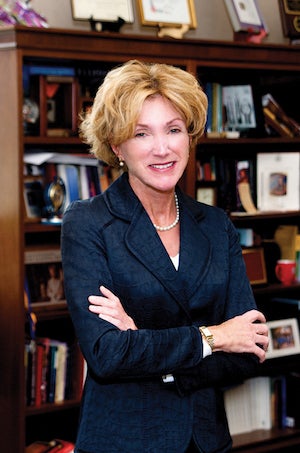MESSAGE
Decades of Advances
Building on our culture of discovery
 President Barbara R. Snyder
President Barbara R. Snyder
Innovation is hardly new to Case Western Reserve.
In the late 1800s, Professor Albert Michelson invented the interferometer—a device that gathers information as waves pass through it—and later used it in the Michelson-Morley experiment said to have informed Albert Einstein's theory of relativity.
In the early 1900s, medical school alumnus and professor George Crile performed the first surgery using direct-blood transfusion.
In ensuing decades, alumni and faculty played pivotal roles in the development of insulin, the polio vaccine and carbon fiber. More recently, they created the Nike Air Sole, the first widely successful computer anti-virus program, Digital Light Processing (used in movie theaters) and—perhaps the best known—Gmail.
Yet, an impressive history is no promise of subsequent success. Cultivating innovation's essential aspects—like creativity and opportunity—require constant attention. Fortunately, ours is a community that continues to embrace that challenge. In 2011, for example, we announced participation in Blackstone LaunchPad (now the Burton D. Morgan Foundation-supported NEO LaunchNET), and in 2012 opened the pilot version of what is now the Larry Sears and Sally Zlotnick Sears think[box]. In 2013, we launched two MOOCs (Massive Open Online Courses)—and one online degree. That same year, Case Western Reserve became the first university to have student entrepreneurs at CES, the world's largest consumer electronics show.
As you will see in this issue, faculty members also engage fully in discoveries. One has founded a company to develop data-storage discs that can hold extraordinary amounts of information. Another has developed an imaging solution to tell whether a mass in the body is cancerous. Finally, this summer, two more announced that their company had raised $7.8 million to support efforts to develop medications that could slow or even reverse neurological diseases like multiple sclerosis.
This fall, we welcomed the university's largest and most accomplished undergraduate class, and soon will be sharing news about another innovation-related initiative. I can't wait to see how these developments contribute to still more original ideas coming from our campus.

Barbara R. Snyder
President





